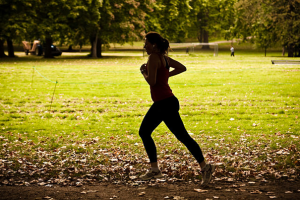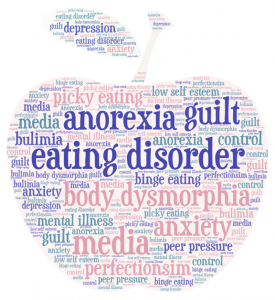Nancy’s Story
Case Study Downloads
- Meet Nancy (PPT)
- Nancy’s Story (Single Slide) (PPT)
- Nancy’s Story (DOCX)
- Teaching Notes (In Progress)
Applicable Courses
- Health Promotion and Active Living
- Social Determinants of Health
- Human Anatomy and Physiology
- Human Pathophysiology/Altered Physiology
- Health Research
- Mental Health and Disabilities
Nancy’s Story
Nancy, born in 1985, was the second child of Mary and Jack. She lived with her parents and older brother, Phillip, in a small rural town in Northern Ontario. She was a very active child, to the point that some would call her a “Tomboy”. Nancy played many sports at school and in local leagues. She was quite competitive. Nancy enjoyed the company of her father, spending many days fishing and hunting with him.
Neither Nancy nor Phillip had many friends at school. They never really felt like they ‘fit in’ with the other kids. She was ‘too white’ for some kids and ‘too native’ for others. When she was younger she was often teased and called names. Between not fitting in and the pressure to fulfill her father’s desires to have an athlete in the family, Nancy pushed herself physically. She felt comfortable in her father’s quiet presence.
When Nancy reached her teenage years, she played basketball, hockey, ran a number of events in track and field, and competed in gymnastics. She loved to win, and had many trophies and ribbons in her bedroom. Her father was very proud of her accomplishments. With these sports taking up much of Nancy’s time, her school grades were average due to competing priorities.
Mary was concerned about her daughter’s health and wellbeing. She often discussed her concerns with Jack, but was dismissed as being overprotective. One day, Nancy’s school called and asked Mary to come and pick her up. Nancy had injured her leg during a 10 km run.
Mary took Nancy to the local emergency department, as Nancy was in considerable pain and unable to bear weight on her left leg. The emergency physician ordered an x-ray of Nancy’s left leg, blood work, and did a physical exam. The diagnosis was a stress fracture of the left tibia.
However, the physician was more concerned about Nancy’s appearance and her story. The physician followed-up with a more comprehensive history from both Nancy and her mother. What come to light was the following:
- Fatigue (Nancy stated that she always felt tired, and would fall asleep if she sat still for more than 5 minutes)
- Weight loss (Nancy’s BMI is 15.7)
- Absent menstrual periods for the last six months (in the last year, Nancy had only 2 very light periods)
- Periods of fasting, binging, and self-induced vomiting (purging)
- Extreme exercise (Nancy ran 10 kilometers each day, had morning and after-school practices, games and competitions, and competed in a number of events each weekend)
Based on the clinical findings, the emergency physician diagnosed Nancy with Female Athlete Triad. It was explained to Nancy and her mother as an interrelationship of menstrual dysfunction, low energy availability (with or without an eating disorder), and decreased bone mineral density. It is relatively common among young women who participate in sports, but has the potential to be a serious condition. Diagnosis and treatment are complicated and often require an interdisciplinary team.
Nancy’s story continues…
Nancy met with all of the healthcare specialists that the emergency physician referred her to, and a multidisciplinary team for Nancy’s case was formed. They were all in agreement that Nancy should refrain from sports until she was cleared for return-to-play.
Her father did not see what all the fuss was about. He urged Nancy to get back to what she loved to do.
Nancy went to all her appointments to satisfy her mother and family doctor. However, she continued to binge and purge behind her mother’s back. She would often skip class to go running.
It took three years of hard work for Nancy to reach a healthy weight, eat well, and have a healthy outlook on exercise and activity. She continued with oligomenorrhea, however.
Nancy went away to university and began to work out and run again. After she graduated, she obtained a financial job in Toronto. She was working out and running twice a day to cope with the stress in her life. It was a lifestyle that she could not give up, and now that she was on her own, she had total control over her body. She was obsessed with maintaining an ‘ideal weight’ and fell back into the binging and purging of food.
She met Paul through mutual friends. They started dating in 2010, eventually marrying in 2012. About two years after they got married, they started talking about having a family. Paul had adopted twin girls from a previous marriage that they saw very infrequently.
Nancy and Paul began trying to conceive in 2013. By 2016, Nancy and Paul had seen fertility specialists. They were not hopeful that Nancy could conceive due to her history and ongoing struggle with exercise and eating, as well as the increased amount of stress in her life.
It was 2019, Nancy was successful in her career, and going to school for her CPA certification. She was relying on Paul to help out around the house, but had some concerns about his use of pain medication. Despite her concerns, Nancy wanted to be a mother and since they had no luck with conceiving or with costly in-vitro fertilization, they decided to adopt. In January 2020, they were notified that a toddler named Sam was available for adoption.
Shortly after Sam arrived to live with them, Jack called and told Nancy that Mary was in hospital. She had fallen and fractured her hip, and would be having a total hip replacement the next day. Jack stated that they would have to come and stay with Nancy and Paul while Mary recuperated from her surgery, as their family home was not suitable for Mary post-operatively. Nancy asked her father about staying with her brother Phillip, but Jack would not consider that as an option.
Nancy had no choice but to book time off work, and arrange for someone to come in and help with Sam, Paul, and the housework while she was away for a few days. She hoped to find the time to continue with her studies while she was away. She was not sure if her parents had internet, so her back-up plan was to go to the local library a few hours each day.
Nancy arrived a few days prior to her mother’s discharge to help pack up what her mother and father would need while they stayed at her house. Instead, she found her father in need of medical attention and brought him into the emergency department at the local hospital, where he was quickly admitted.
Nancy was now in a dilemma as both of her parents were in hospital. Her mother was due to be discharged the next day. The plan had been for Nancy to take both of her parents to stay with her while her mother recuperated. She needed to get home to her son, husband, and her studies.
Nancy spoke with the discharge planner and explained the situation. Mary would be transferred to the Alternative Level of Care Unit until Jack was ready for discharge. Nancy then called her husband Paul to discuss what she should do.
Nancy returned home the next day to prepare for her parents’ arrival. Over the next week, Nancy was consumed by the sheer amount of preparations required.
Meanwhile, Sam required multiple appointments, extra care, monitoring, and a special diet. Paul was not being helpful, instead often being distant with both Nancy and Sam.
To cope with the significant added stress in her life, Nancy fell back into her old behaviours: binge eating, then feeling guilty and purging. She was extremely stressed by all of the decisions she needed to make for her parents and her new son, along with dealing with her husband’s erratic behaviour and narcotics use.
Case Key Words
- Adoption
- Binge eating
- Biracial
- Eating disorders
- Female Athlete Triad
- In Vitro fertilization (IVF)
- Stress eating
- Stress fracture
- Stress response




